By Sherry Flumerfelt, Executive Director
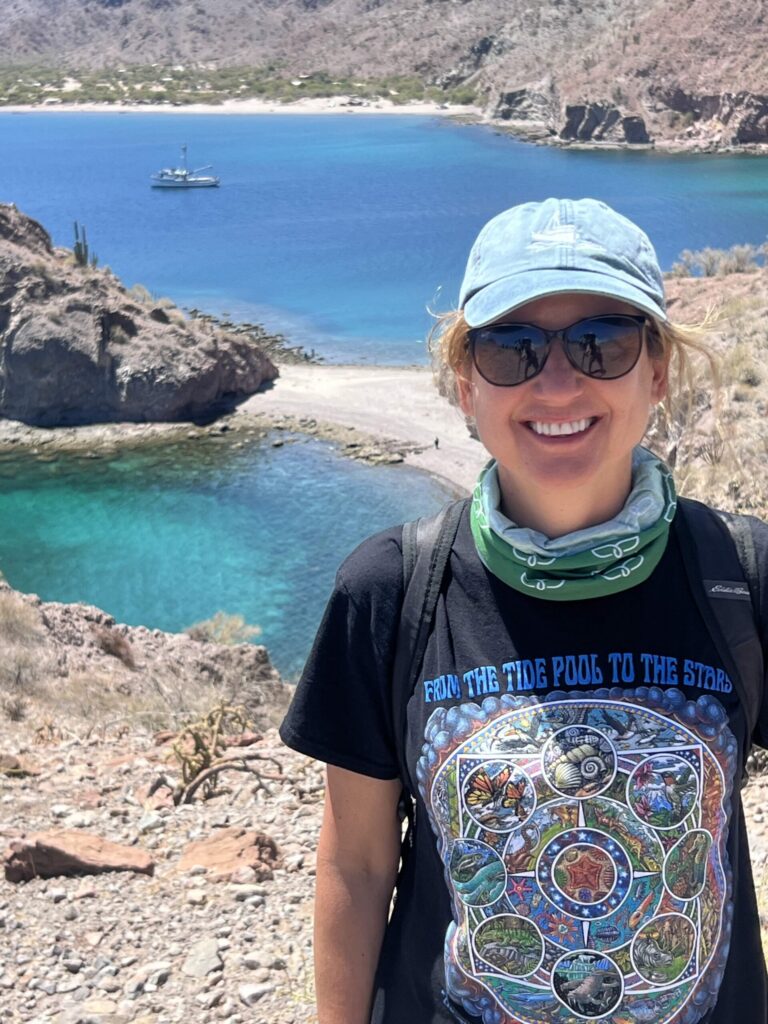
No engine. No rigging. When I stepped into this role three years ago, the Western Flyer was still a dream in progress — lovingly restored, full of promise, but not yet a working vessel.
From the beginning, though, John Gregg and our Board had a clear goal: to return the Western Flyer to the Gulf of California—not just to retrace the 1940 journey of Steinbeck and Ricketts, but to do something more. There would be science, yes—but also students, communities, and connection.
It was a bold vision. For a small team like ours, maybe even a slightly crazy one.
Still, by the fall of 2023, we’d started planning in earnest. There were a thousand questions: what were our goals? How would we fund it? Who would we partner with? Would the boat be ready in time? What were our backup plans?
By the following summer, deadlines loomed. Most critically, we faced a permitting process that could take up to ten months to be approved, meaning we might not get the green light until just days before our planned March departure from Monterey.
We took a collective deep breath, crossed our fingers, and kept going — one step at a time.
In the months that followed, everything ramped up. We built new partnerships with UnCruise Adventures, Innovaciones Alumbra, and an incredible network of Mexican organizations. We raised funds (thank you to every donor who believed in us). We filled budget gaps, navigated staffing changes, and kept local programs afloat — and still, the boat wasn’t quite ready. And the permit? Still pending.
By early 2025, things went from busy to bonkers.
Captain Paul and the crew raced to prepare the Flyer for our March departure — provisioning, engine tuning, installing scientific equipment. Meanwhile, we were juggling logistics, press, fundraising, and a calendar that refused to stop growing. Nobody was sleeping much.
Then — just one week before departure — the permit came through. At last, everything snapped into place. We were ready. Or as ready as we’d ever be.
On March 16, 2025, we left Monterey to a dock full of hugs, cheers, and goodbyes.
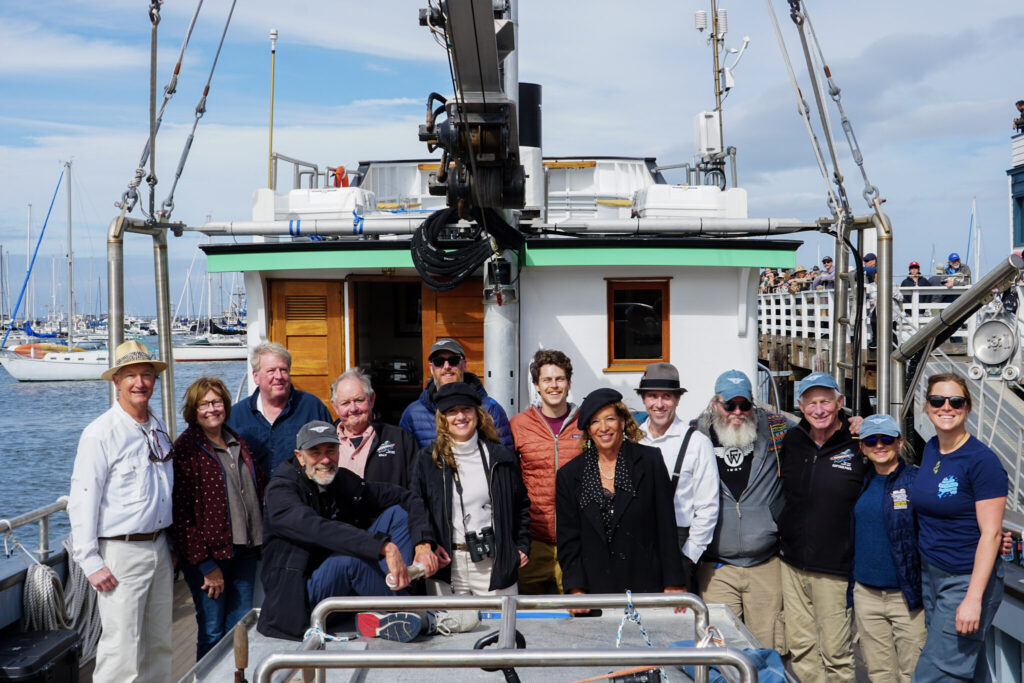
A Glimpse from the Voyage
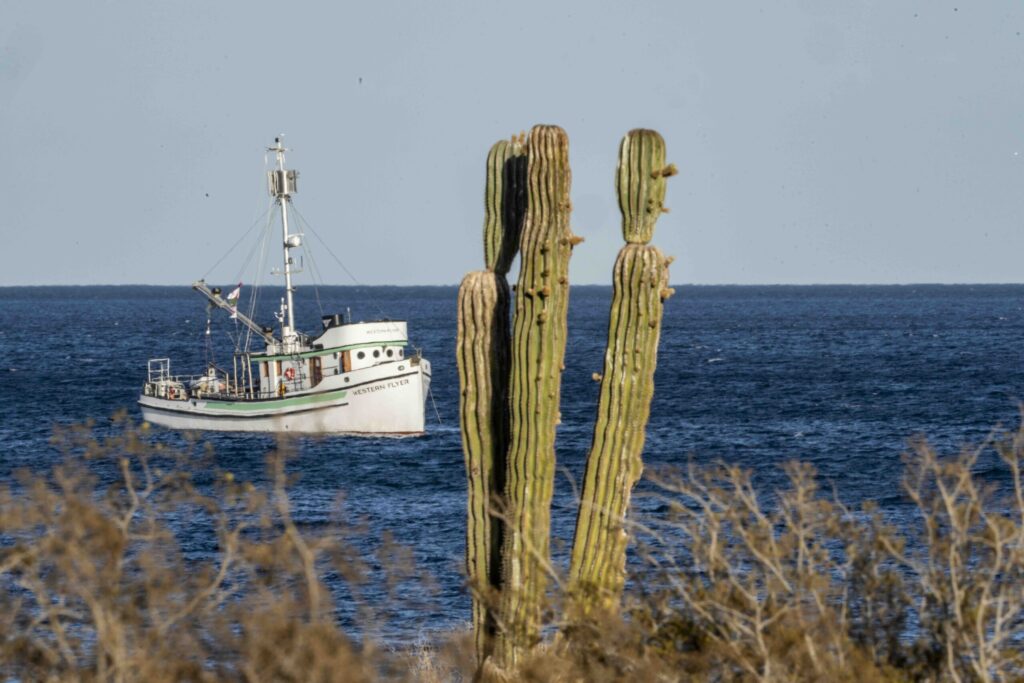

Over the next 100 days, the Western Flyer traveled close to 4,700 miles retracing part of the original 1940 expedition — this time with students, scientists, storytellers, and community partners aboard. What began as a bold vision was becoming a living, breathing reality.
We brought research and education programs to 16 coastal communities in California and Mexico — making 22 stops, including return visits to deepen connections. Partnering with dozens of local schools, universities, conservation groups, museums, and government agencies, we reached more than 700 students. An estimated 10,000 people joined us for public events, and nearly 4,000 toured the Western Flyer — from Santa Barbara and San Diego to La Paz, Agua Verde, Santa Rosalía, and San José del Cabo.
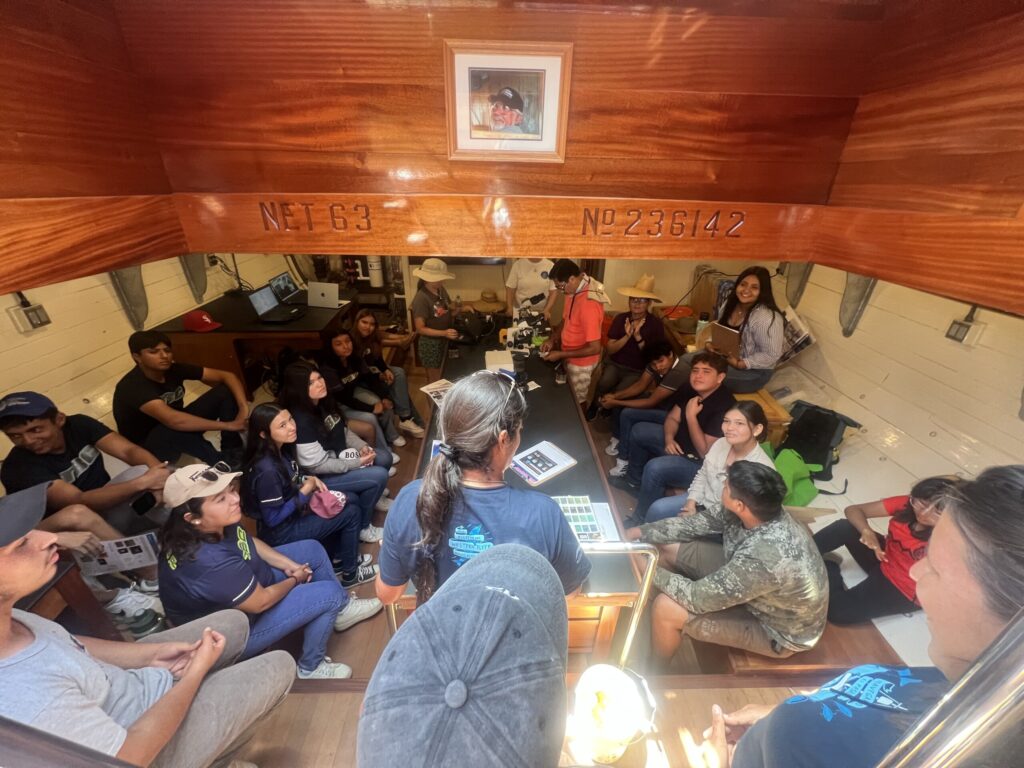
At 43 different research sites, students, scientists, and educators worked side by side deploying CTDs, collecting eDNA, exploring seamounts, towing plankton nets, and documenting everything from nudibranchs in mangroves to the surprise return of Humboldt squid. From ROV dives to intertidal surveys, from watching whales to examining the tiniest plankton, the science was hands-on, collaborative, locally grounded, and deeply personal — revealing not only the Gulf’s hidden stories, but new possibilities for the next generation.
There were quiet moments of wonder, too. In Loreto Bay, the calm waters were broken by the sudden belly-flops of mobulas — flying rays launching skyward in bursts of energy. And on a few evenings, during late-night research, bioluminescent dolphins appeared at the bow — glowing streaks in the dark water, keeping silent pace with the Flyer.
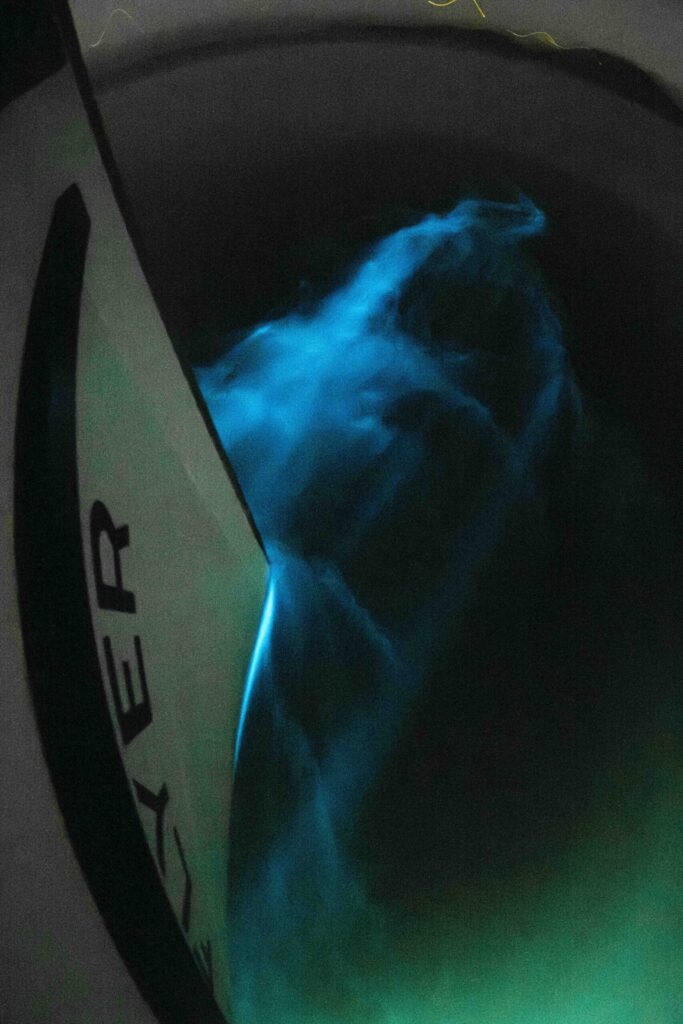
Tokens and Treasures: Gifts from the Journey
One memorable stop came in Puerto Escondido, where we met the children of Leopoldo Perpuli — the local guide who once led Steinbeck and Ricketts on a bighorn sheep “hunt” (spoiler: no sheep were harmed). They shared stories of their father’s admiration for Ricketts — and gifted us a photo of the hunting group that now hangs in the Flyer’s galley.
Throughout the journey, we were offered other gifts — some heartfelt, some humorous. A few favorites:
- A pot of Sparky’s spaghetti, made by Bob Enea (Sparky and Captain Tony’s nephew), to send us off.
- A bottle of whiskey from Andrew Kim of Sunflower Star Labs, “for medicinal purposes.”
- Beautiful hand-carved wooden Western Flyers from the Santa Rosalía community.
- Student art inspired by The Pearl and Of Mice and Men.
- A handmade doll in traditional dress, gifted by a community member in Cabo Pulmo for safe passage.
- And plenty of delicious treats, local honey, hot sauce, Carta Blanca.. and more Carta Blanca.
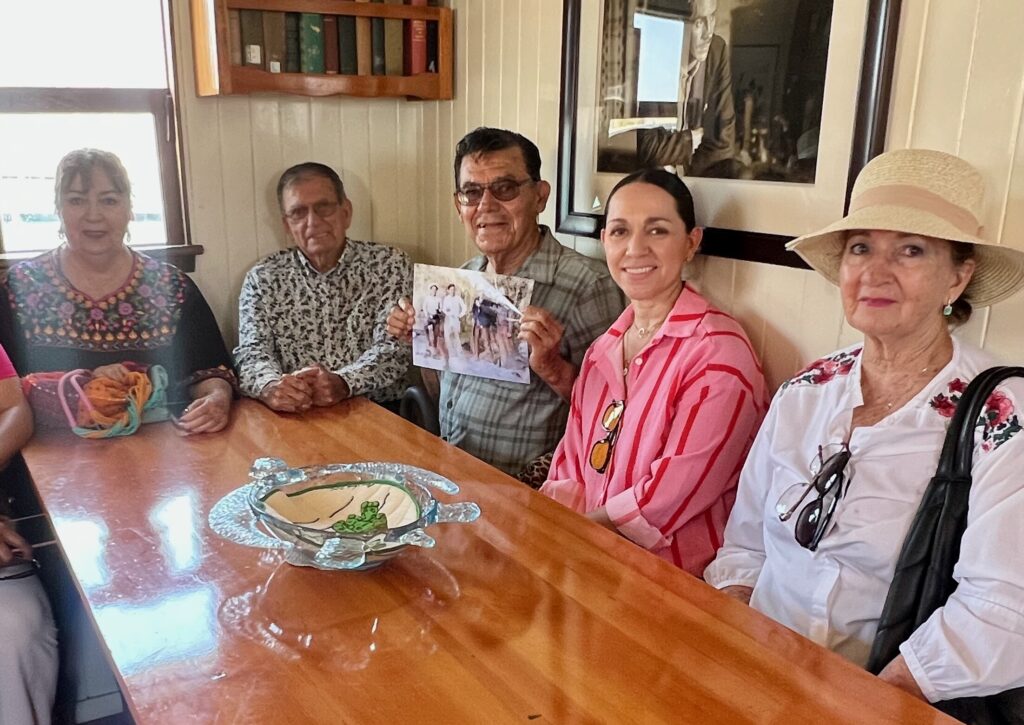
The Bumps Along the Way
Of course, no expedition is without its hiccups — and this one was no exception. We battled wind and swells, jam-packed schedules, tight quarters, finicky toilets, grumpy moods, and an operational issue or two.
Oh, and the hand injuries? Not one, not two — but three. We’re not saying they were directly connected to John Gregg’s retelling of the Jackie Ray saga the night before we left — you know, the famously cantankerous Western Flyer captain with a hook for a hand, lost overboard (except for the hook, now allegedly hanging in a bar in Alaska). But the timing? Highly suspicious.
Amazingly, we still pulled off nearly every partnership and public event on our ambitious itinerary — with just two exceptions: one community research day canceled after partners flagged security concerns in the region, and a one-week delay on our return home thanks to the gales. But that delay? It meant we arrived back on Day 100 exactly. Steinbeck couldn’t have scripted it better.
What This Expedition Showed Us
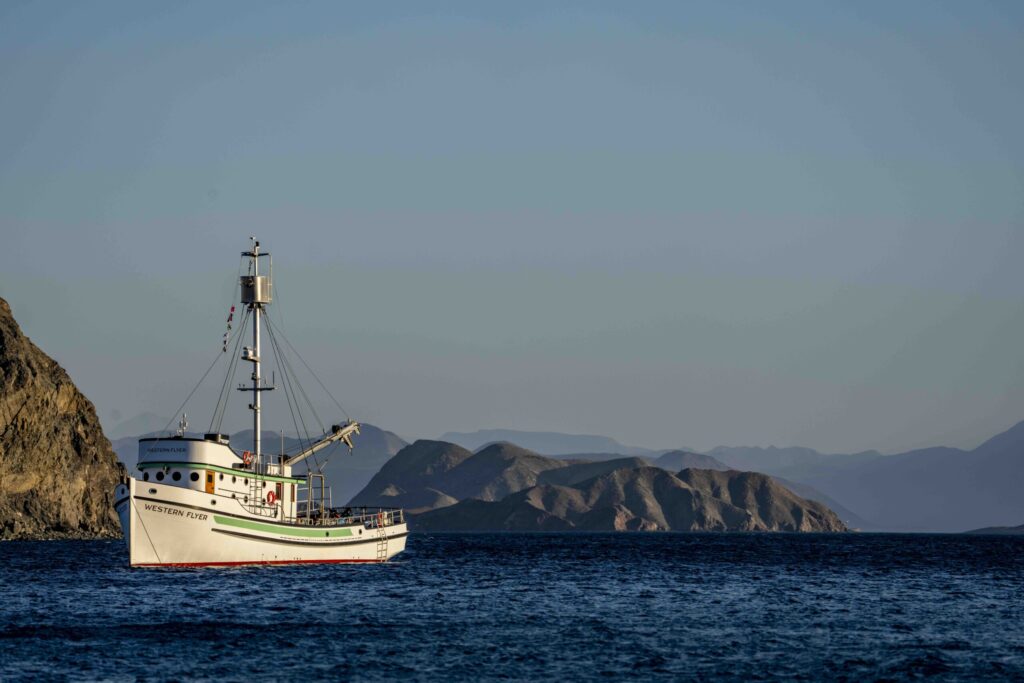
It wasn’t perfect. It was real. And it worked.
This journey affirmed what we believed: the Western Flyer is more than a boat — it’s a platform for science, storytelling, and connection. And it’s the people and partnerships that made it all possible.
We saw students light up at their first glimpse through a microscope, scientists collaborate across borders, and communities welcome us with generosity, curiosity, and care. We witnessed the power of collaboration — among NGOs, educators, artists, researchers, government officials, and community members — each adding their own voice to the story.
It reminded us that this mission still matters — across generations and geographies — and that with persistence and partnership, you can go a long way. Even 4,700 miles.
Steinbeck and Ricketts said it best at the end of Sea of Cortez:
“This trip had dimension and tone… It was a thing whose boundaries seeped through itself and beyond into some time and space that was more than all the Gulf and more than all our lives.”
Eighty-five years later, those boundaries are still expanding.
The Western Flyer is back in Monterey Bay. But the voyage? It’s far from over.
With gratitude,
—Sherry
The story continues — and there’s so much more to discover. Be part of the next chapter of curiosity, connection, and wonder.

